Campers are great for adventure but can get humid inside. Too much dampness is uncomfortable and unhealthy. Dehumidifiers remove excess moisture from the air in a camper. This helps control mold and condensation. Dehumidifiers make the indoor camper environment cleaner and more comfortable.
Using a dehumidifier properly keeps an RV dry inside. The air feels less muggy. Windows don’t drip with water. Surfaces stay dry and clean. Items don’t get musty and moldy. A dehumidifier makes a camper fresh and prevents damage from dampness.
In this article, I’ll share tips on choosing and using the right dehumidifier for your camper needs. Soon your RV will feel pleasantly dry on every trip. Breathing clean, comfortable air will make camping more enjoyable. Your camper will become a perfect home on the road.
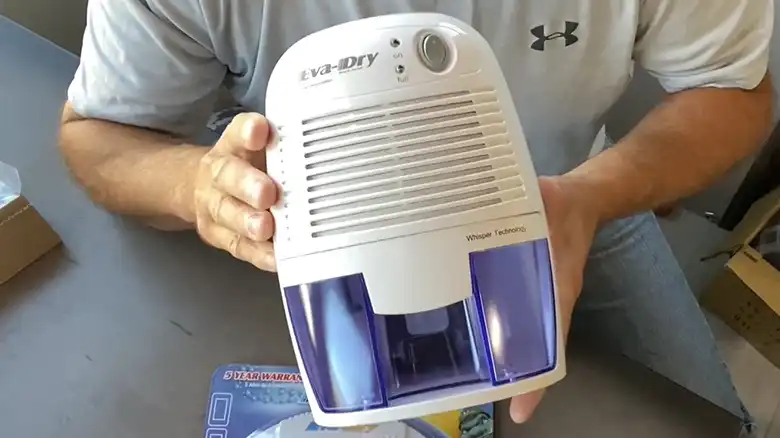
What Do Dehumidifiers Do in a Camper?
Dehumidifiers operate through a simple yet effective process. They draw in moist air, cool it to condense the moisture and release dry air back into the space. This process significantly reduces humidity levels, combating issues associated with excessive moisture in the camper.
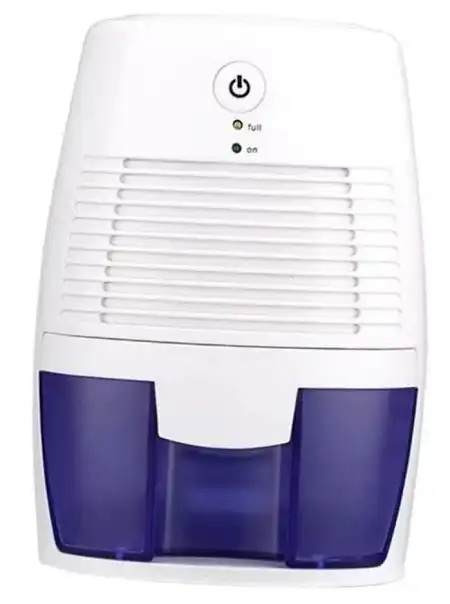
Why You Need a Dehumidifier in Your Camper
The necessity of a dehumidifier in your camper cannot be overstated. Excess humidity can lead to mold, which not only poses health risks but can also damage the structure of the camper. A dehumidifier is your proactive defense against these issues.
Too much humidity causes issues like:
- – Windows dripping with condensation
- – Surfaces becoming damp and moldy
- – Increased presence of musty odors
- – Stuffy, muggy feeling in the air
A dehumidifier solves these problems by lowering the humidity to more comfortable levels. RV models are made to withstand vibration and operate efficiently in the confines of a camper.
Signs Your Camper Needs a Dehumidifier
How can you tell if your RV would benefit from a dehumidifier? Look for these signs:
Musty Odors: If you notice persistent musty smells, it’s a clear indication of high humidity, and a dehumidifier can help eliminate these odors.
Mold Growth: The presence of mold on surfaces is a sure sign that the camper environment is too humid. A dehumidifier can prevent further mold development.
Condensation: Excessive condensation on windows or other surfaces signals elevated humidity levels, requiring the intervention of a dehumidifier.
If you notice any of these issues, a dehumidifier can likely help improve the indoor climate. Excessive humidity impacts comfort and promotes deterioration.
Types of Dehumidifiers for Campers
There are two main types of dehumidifiers suitable for camper use:
Compressor Dehumidifiers: These are the most common type, using a compressor to cool and condense air. They are efficient and suitable for larger camper spaces.
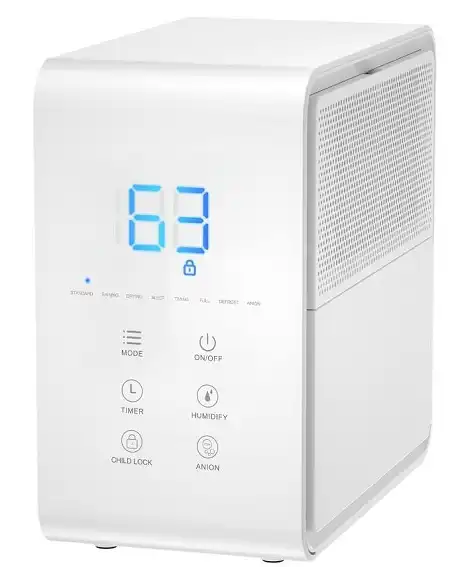
Desiccant Dehumidifiers: Desiccant models use materials that naturally absorb moisture. Air passes over these drying agents to lower humidity levels. They don’t require compressors so are quieter, but less efficient for severe dampness.
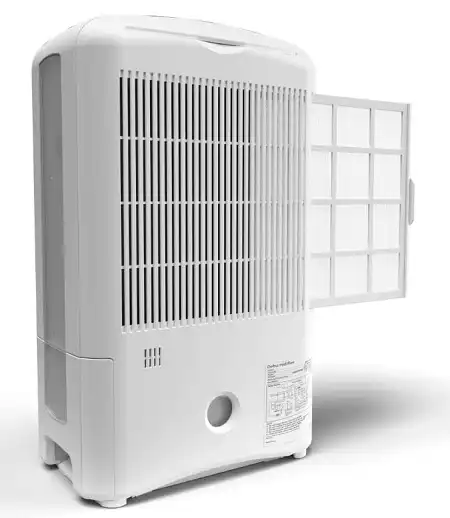
Portable vs. Permanent Dehumidifiers: You can also choose between portable or permanent RV dehumidifiers. Portable dehumidifiers are light and small and also offer flexibility, allowing you to move them as needed. Permanent units are stronger, bulkier, have larger capacities, and efficiency ratings and are installed directly into the camper’s infrastructure.
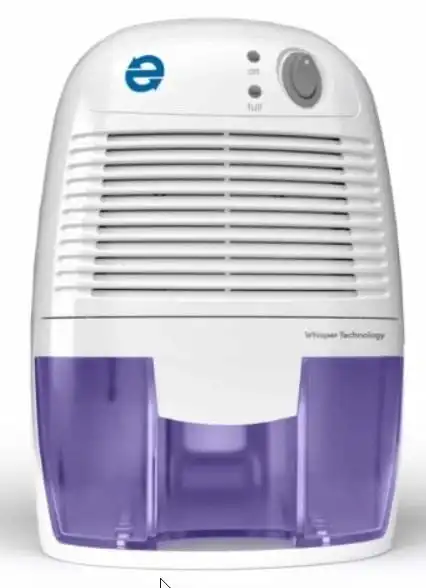
How to Control Humidity in Your Camper?
Too much humidity damages RVs. It leads to mold and decay. Wet air ruins surfaces faster over time. Managing moisture levels is essential.
Using a dehumidifier effectively reduces dampness in campers. Dehumidifiers remove excess moisture from the air. This prevents condensation and musty odors inside.
Try keeping a portable dehumidifier running in problem areas. Use the humidistat to control moisture levels for cleaner, more comfortable RV air. Empty the tank regularly.
Damage from Excess Humidity in Campers
Humidity ruins RVs when left unchecked. It causes mold, mildew, and dry rot even if carefully covered and stored. Moisture also damages walls, furniture, and appliances over time through decay and corrosion.
A friend’s RV headliner was ruined by humidity despite no leaks. The entire surface underneath had dry rot damage from dampness while covered.
Always use dehumidifiers and ventilation, even for stored RVs. Controlling moisture prevents expensive repairs from mold, corrosion, and rot over the seasons.
Choosing the Best Dehumidifier for Your Camper
Selecting the right dehumidifier comes down to capacity, features, and intended use. The key factors to consider are:
a. Consider Capacity: Select a dehumidifier with the capacity to handle the size of your camper effectively. Larger units are suitable for bigger spaces.
b. Energy Efficiency: Opt for an energy-efficient model to conserve power, especially in scenarios where electrical supply may be limited.
c. Auto Shut-Off and Humidistat: Ensure your chosen dehumidifier has these features to prevent over-drying and unnecessary energy consumption.
d. Portability: For those who frequently change camp locations, a portable model with easy mobility is beneficial.
Best Placement for a Camper Dehumidifier
To get the most out of your RV dehumidifier, follow these tips on placement and maintenance:
a. Strategic Placement: Position the dehumidifier in areas prone to high humidity, such as the kitchen or bathroom, for optimal results. Don’t restrict airflow around the unit.
b. Proper Ventilation: Allow for adequate airflow around the dehumidifier to enhance its efficiency in moisture removal. Route hoses outside if possible.
c. Maintenance: Regularly clean and maintain the dehumidifier to operate efficiently. Empty the tank to avert overflow issues.
Dehumidifier Safety Tips for Campers
While very safe appliances, follow these precautions when using a dehumidifier in your camper:
a. To prevent spillage, empty the water tank before it reaches full capacity.
b. Position the dehumidifier away from walls to avoid potential water damage.
c. Some models may overheat; hence, it’s crucial to keep them away from open flames or heat sources.
d. Not all dehumidifiers can withstand the vibrations of camper travel, so choose one specifically designed for RV use.
Benefits of Effective Dehumidification in Your Camper
Using a dehumidifier correctly provides these advantages for your camper’s environment:
a. By maintaining optimal humidity levels, dehumidifiers prevent condensation, ensuring clear windows and a comfortable environment.
b. Effective moisture removal eliminates the source of musty odors, providing a fresher indoor atmosphere.
c. By controlling humidity, dehumidifiers prevent mold growth, safeguarding camper surfaces from damage.
d.Proper dehumidification enhances overall comfort, making the air inside the camper feel less damp and more pleasant.
By keeping humidity in check, a dehumidifier helps maintain a pleasant environment in your camper. No more soggy smells or dripping windows!
Frequently Asked Questions
Q1. How do I know what humidity level to set it to?
A1. Aim for a comfort and condensation-preventing humidity level of 40-50%. Use a hygrometer to monitor and adjust your dehumidifier’s humidistat accordingly. Lower settings extract more moisture, but achieving the target may take a few days.
Q2. How often do I need to empty the tank?
A2. Empty the water tank of medium-capacity dehumidifiers (25-50 pints) every 1-2 days in damp conditions; smaller units may need daily draining. Check the tank daily to prevent overflow. Decreased humidity reduces frequency. Empty before full to avoid spillage.
Q3. Is it safe to use when sleeping?
A3. Dehumidifiers are safe for sleep if positioned away from beds and flammable objects. Choose a quiet model, ensure cords are secure, and opt for auto shut-off and restart features. Properly located, dehumidifiers can run safely 24/7.
Q4. Can I bring it outside the camper?
A4. Many portable dehumidifiers are for indoor use, but some can dehumidify enclosed outdoor spaces. Avoid exposing them directly to rain. Check for weather-resistant components before using them externally.
Q5. How often do you clean the filter?
A5. Clean the dehumidifier filter every 2-4 weeks for optimal performance. Clogged filters reduce efficiency and airflow, impacting moisture removal. Rinse or vacuum as needed to remove dust and debris. Regular filter care prevents overworking the unit.


